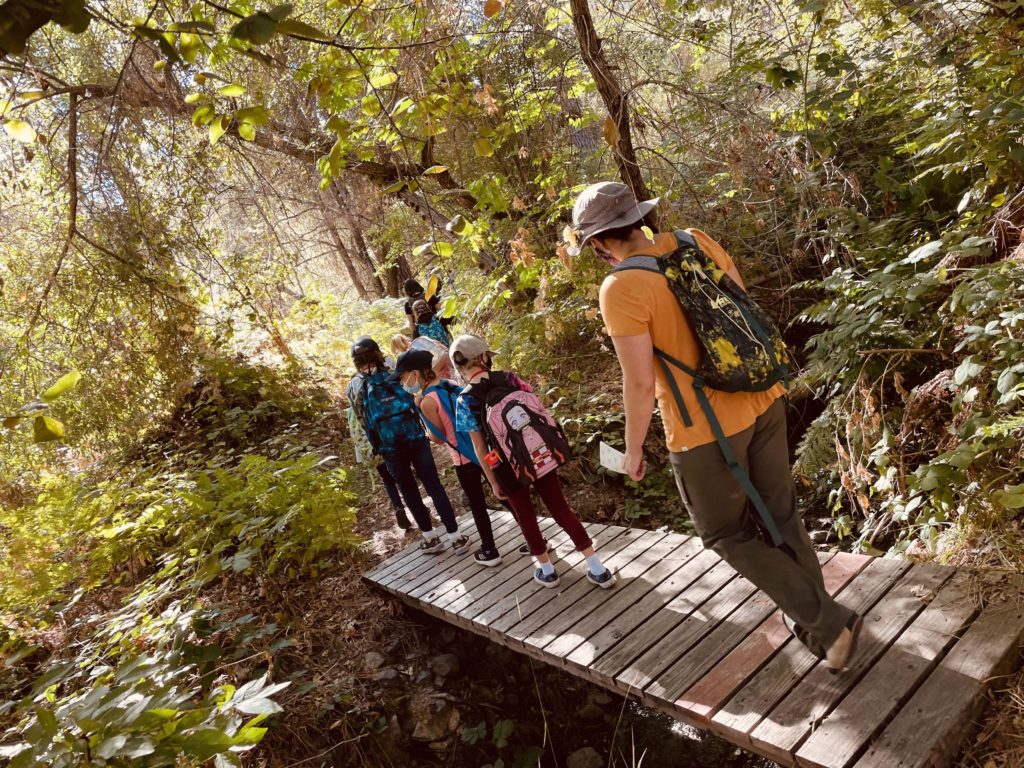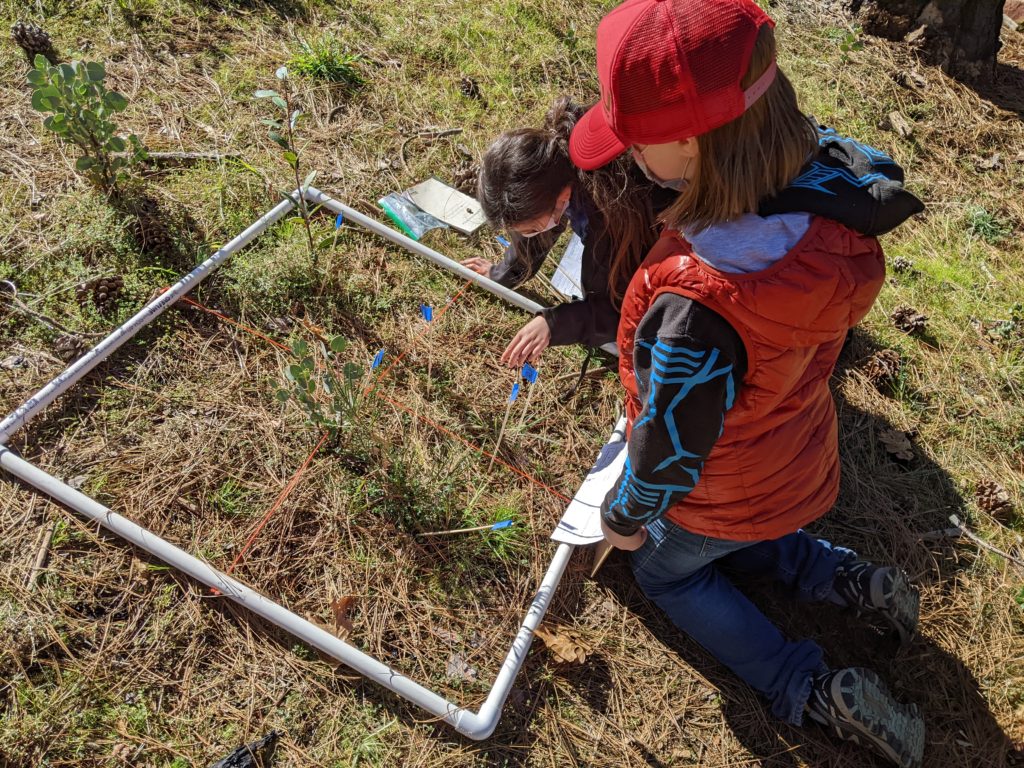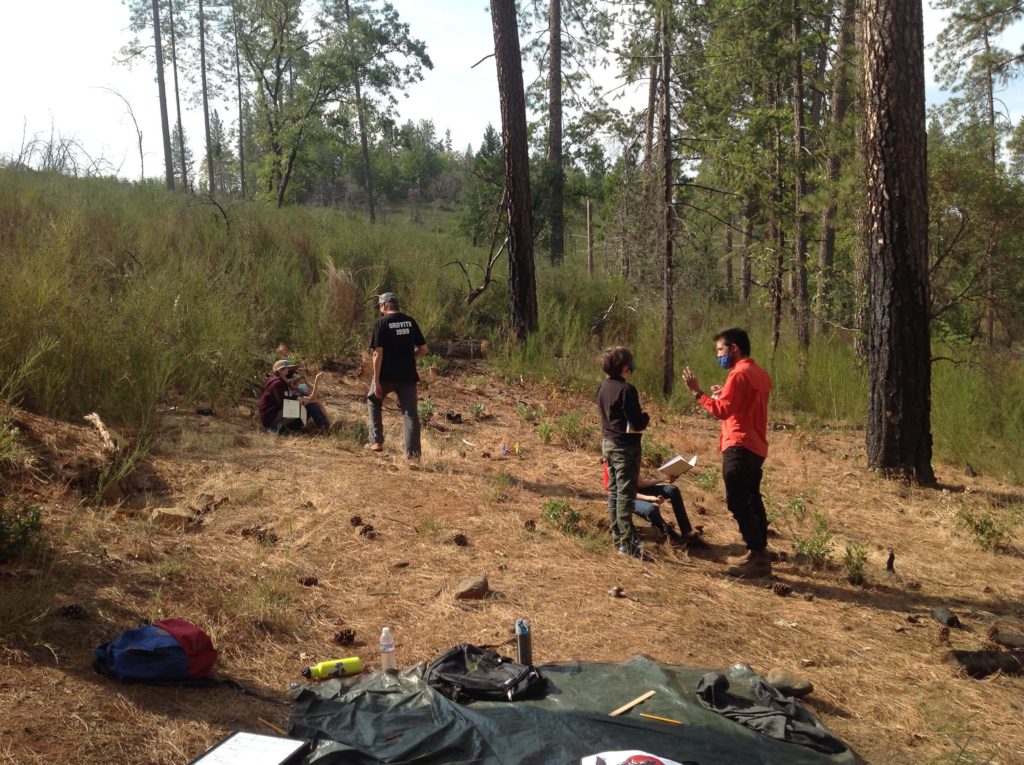
This past school year, Sierra Streams Institute had the joy of venturing into our local forests with over 300 3rd-5th grade students in Nevada County. The mission? Promote students’ environmental science agency, spark curiosity and increase interest in land stewardship through placed-based investigations into forest health. The program, Our Forests, is a multi-year project run in partnership with UC Davis Center for Community and Citizen Science and Nevada County Superintendent of Schools; it is funded through a National Science Foundation grant. This year, we asked students big picture questions about forest health. For example, how are the parts of an ecosystem connected? What factors might affect plant diversity? What do forest fuels indicate about forest health? By the end of the year, students had collected and analyzed data to support their answers to these questions–and generated even more questions of their own!
Embarking on this scientific quest, students from our partner schools–Cottage Hill Elementary, Grass Valley Charter School, Nevada City School of the Arts, and Williams Ranch Elementary School–performed a series of investigations from October – March. Each investigation was carefully designed by grade level and aligned with Next Generation Science Standards. Though the scientific inquiries varied across grades, each grade followed a common program arc consisting of five investigations.
In the fall, investigations 1 & 2 focused on introducing students to their study plots and building confidence with scientific tool use, such as thermometers and soil moisture meters. In the winter, investigation 3 centered on acclimating students to data analysis through interpreting graphs and tables. Finally, in the spring, investigations 4 and 5 tasked students with collecting, analyzing and preparing to share their data with local scientists and land managers, fondly referred to as “community partners.” The program culminated in presentations to community partners from Nevada Irrigation District, State Parks, Yuba Watershed Institute and Sierra Streams, ranging from slideshows about ponderosa pine populations, to letters about invasive species management (we’re looking at you, scotch broom), to a podcast about fire fuels. These presentations also provided students with the opportunity to advocate for land management strategies and probe community partners with their lingering questions.

While the program arc was consistent across grades, each grade had their own niche. Third grade focused on the life cycle of the ponderosa pine, surveying their plots for pine cones, seedlings, saplings and mature trees. Students then measured density and canopy and grappled with how this might affect the ponderosa pine life cycle. Fourth grade focused on the biodiversity and abundance of plants in the forest understory and made connections between density and diversity. Lastly, fifth grade assessed the fire risk of their plots by measuring potential fire fuels: dead and down woody debris (DDWD), tree density and canopy cover.
Regardless of grade level, the Our Forests team could not be more impressed with the nuanced discussions our local elementary students had about forest health. Our hope is that based on the curriculum developed by the program team, along with the research conducted by UC Davis on student learning outcomes, Our Forests can serve as an educational model for future youth-focused community and citizen science programs.
With that, we have many acknowledgements to share. Student data was collected on the ancestral homelands of the Nevada City Nisenan Rancheria and on lands owned by Nevada Irrigation District, CA State Parks (Empire Mine), Woolman at Sierra Friends Center and Nevada City School of the Arts. Additionally, we give our thanks to our partner teachers, community partners, volunteers and chaperones for their instrumental contributions and commitment to the program.

Interested in learning more about our student data collection protocols? Stay tuned for a deep dive into tool use next month!
For questions about Our Forests, please contact Sol Henson, Education Director, at sol@sierrastreamsinstitute.org.

